How Boyle’s Law Affects Us

In this section, we discuss:
- Boyle’s Law and Equalizing
- Inner Ear Barotrauma
- Boyle’s Law and Ascent Rates
- Lung Expansion Injuries
- How does Boyle’s Law apply to the process of equalization?
- What are the possible causes and consequences of inner-ear barotrauma?
- How does Boyle’s Law apply to ascent rates?
- What are the four main lung expansion injuries?
Boyle’s Law and Equalization
Boyle’s Law tells us that, as pressure increases on descent, gasses in our air spaces compress. We must equalize the increasing pressure in those spaces to avoid barotraumas or what are commonly referred to as “squeezes.”
The air spaces affected by descent include:
- Middle ears
- Lungs
- Sinuses
- The air space created by our masks
- Connected passageways, such as the throat and trachea

Air spaces that are open and connected, such as your lungs and uncongested sinuses, equalize automatically, as you breathe increasingly higher-pressure air from your tank. When breath-hold diving, your lungs compress, keeping the pressure of the air inside them — as well as in any connected air spaces — in balance with the surrounding water pressure.
Air spaces that may require a conscious effort to equalize include your middle ears and the inside of your mask. Sinus congestion may make it difficult or impossible to equalize pressure there. Congestion or swelling in the Eustachian tubes can also interfere with equalization.
The Eustachian tubes connect your middle ear spaces to your throat. The opening where the Eustachian tubes join the throat is normally closed. When you swallow or hold your nose and blow, you force air through your Eustachian tubes and into your middle ears, equalizing the pressure.
A factor that can interfere with middle-ear equalization is failure to equalize early and often during descent. Simply stated, if you wait until it hurts — or even until it feels mildly uncomfortable — equalization may be impossible, as the pressure works to keep the Eustachian tubes shut. Only by ascending and, thus, reducing the pressure, may you be able to resume the equalization process.
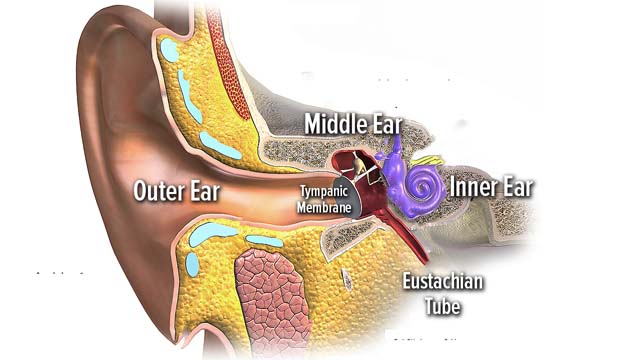
Failure to equalize can result in any number of problems.
- Failure to equalize your middle ear can lead to a painful middle- or inner-ear barotrauma. This can result in damage to the tympanic membrane (eardrum), as well as to the inner ear mechanism itself. The consequences can be increased risk of infection and even permanent loss of hearing and/or balance.
- Failure to equalize pressure in the sinuses can cause blood vessels in the sinus walls to rupture and the sinuses to fill with blood and fluid in an effort to maintain the correct relationship between pressure and volume. This is not only painful, it increases the risk of infection as well.
- Failure to maintain a constant pressure in your mask by exhaling into in periodically during descent can cause blood vessels near the surface of the skin to rupture — especially around the eyes. The resulting twin “black eyes” may, at best, make you look like a raccoon.
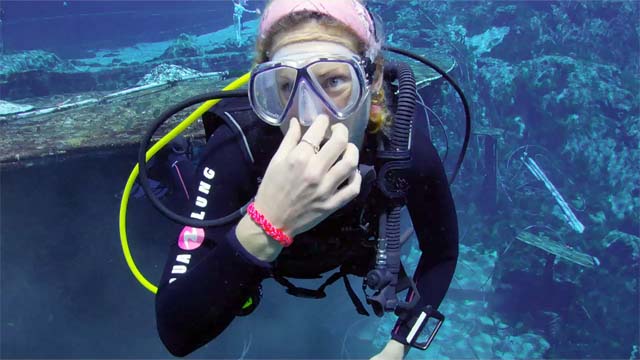
As an experienced diver, you should be well aware of the basic causes and prevention of pressure-related problems during descent. What Boyle’s Law teaches us, however, is that while pressure increases at a constant rate during descent, the volume change due to pressure is most pronounced near the surface. This makes the equalization process even more critical during the early stages of descent.
Inner Ear Barotrauma
Because the inner ears contain liquid and not air, they cannot be “squeezed” like the middle ears and sinuses can. However, because they are located next to the middle ears, the inner ears are susceptible to the same pressure differentials and imbalances. Inner ear barotrauma can result from two factors:
- An uncontrolled middle ear squeeze
- A forced equalization which can transfer pressure to the inner ear, rupturing or distending the oval or round windows
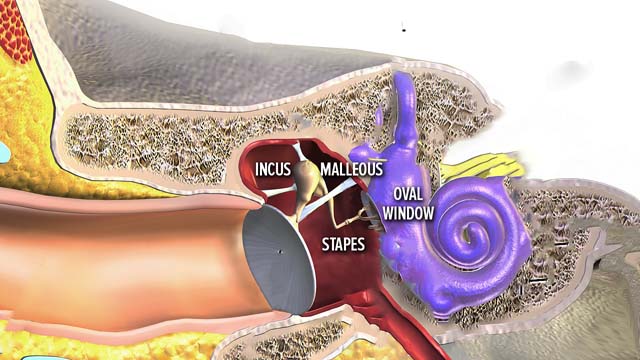
The middle ear has three bones that connect the tympanic membrane (ear drum) to the inner ear. These are:
- The malleus transfers sound vibrations to the incus.
- The incus further transfers these vibrations to the stapes.
- The stapes is connected to a membrane-covered hole called the oval window.
Like the oval window, the round window is also a membrane covered hole that connects the inner ear and middle ear. The stapes transfers sound vibrations to the oval window and drives it inward. The round window relieves the pressure wave caused by the vibrations by bulging outward.
During an uncontrolled middle ear squeeze or a forced equalization, too much pressure is transferred to the inner ear and can distend or rupture the oval or round windows. When this occurs, the fluid in the inner ear can leak out, causing damage to the delicate cells in the inner ear and resulting in hearing loss and problems with maintaining balance.
Boyle’s Law and Ascent Rates
Boyle’s Law describes how gases in flexible containers expand on ascent. It explains why we must ascend slowly to allow time for gas to vent from the air spaces in our ears, lungs and sinuses in order to avoid problems such as lung expansion injuries or reverse squeezes.
Most experts recommend an ascent rate no greater than 10 m/30 ft per minute — and even slower as you approach the surface. This is a lot slower than it may sound.
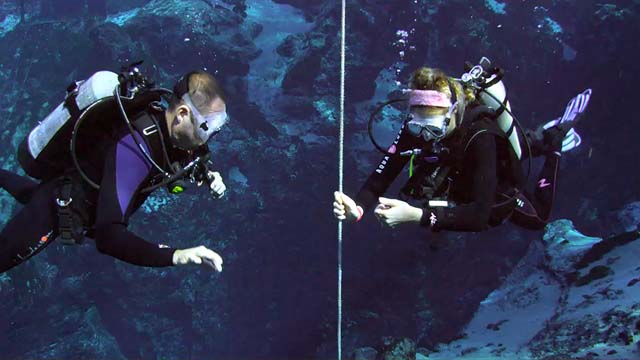
Slow ascents not only help reduce the risk of lung-expansion and similar pressure-related ascent injuries, they are also important in helping prevent decompression sickness (DCS) — something we discuss in greater detail later on.
Among the greatest benefits of using dive computers is the fact they generally do a better job of monitoring ascent rates than divers can do on their own.
Lung Expansion Injuries
The four main lung expansion injuries are:- Arterial Gas Embolism
- Mediastinal Emphysema
- Pneumothorax
- Subcutaneous Emphysema
As you ascend, the gas in your lungs expands. If you breathe normally while maintaining a slow ascent rate, you will vent the expanding gas automatically. If you voluntarily or involuntarily hold your breath, the expanding gas has no place to go and may tear lung tissue and begin “leaking” out as the pressure in your lungs increases.
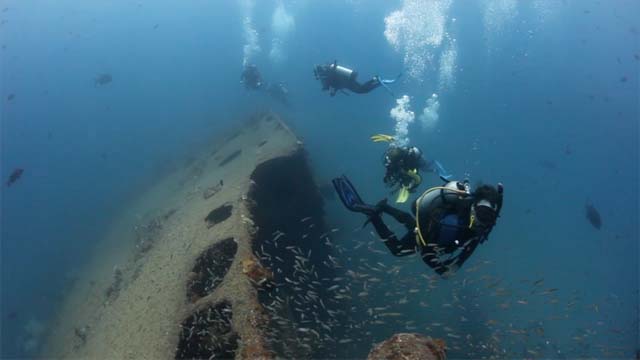
Obstructions in the lungs from asthma or secretions from a severe cold or pneumonia can also trap gas causing a lung expansion injury. The location and nature of the leak defines the type of lung expansion injury you have.
- An Arterial Gas Embolism results from gas bubbles from the expanding air entering the arteries and obstructing the blood flow to the brain or heart. This could lead to a stroke — possibly fatal.
- Mediastinal Emphysema occurs when air is forced out through ruptured and torn lung tissue into the middle chest area surrounding the heart called the mediastinum. If this happens, you will experience a dull ache or pain near the breastbone.
- A Pneumothorax results from air trapped in the space between the lung and the chest wall. This could lead to a collapsed lung.
- Subcutaneous Emphysema results if the air in the mediastinal region of the chest moves up into the neck area under the skin.
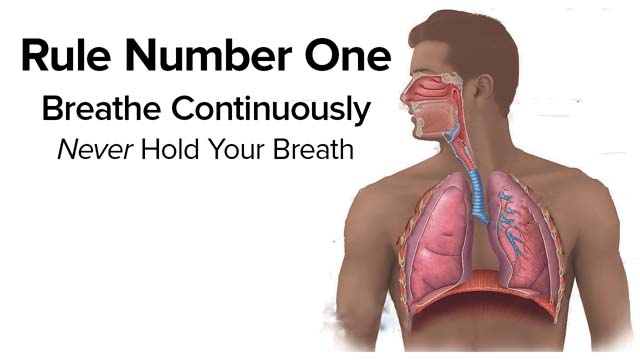
There are two important points for you to remember regarding lung expansion injuries.
- Breathing normally during ascent and not diving with congestion or a cold will help prevent most of these injuries from occurring.
- Lung expansion injuries must be taken seriously. Most of the injuries coexist; if you have one you might have others. They can also occur in stages where one leads to another. For example, Subcutaneous Emphysema is the direct result of Mediastinal Emphysema. A Pneumothorax can lead to an Arterial Gas Embolism.
If you suspect that you or another diver has a lung expansion injury:
- Activate EMS.
- Call Divers Alert Network (or the equivalent local diving medical organization) and follow their directions.
DAN may have you administer oxygen while awaiting the arrival of EMS.
Key Points to Remember
- Boyle’s Law affects the equalization process in many ways, including the need to equalize early and often during descent and the importance of not diving with a cold or congestion.
- Inner-ear barotrauma can result from an uncontrolled middle ear squeeze or a forced equalization. This can transfer pressure to the inner ear and rupture or distend the oval or round windows.
- Boyle’s Law helps explain why slow ascents are important in helping to prevent lung expansion and similar injuries. Ascents should never exceed a rate of 10 m/30 ft per minute.
- The four main lung expansion injuries are:
- Arterial Gas Embolism
- Mediastinal Emphysema
- Pneumothorax
- Subcutaneous Emphysema
Learn More on Wikipedia
